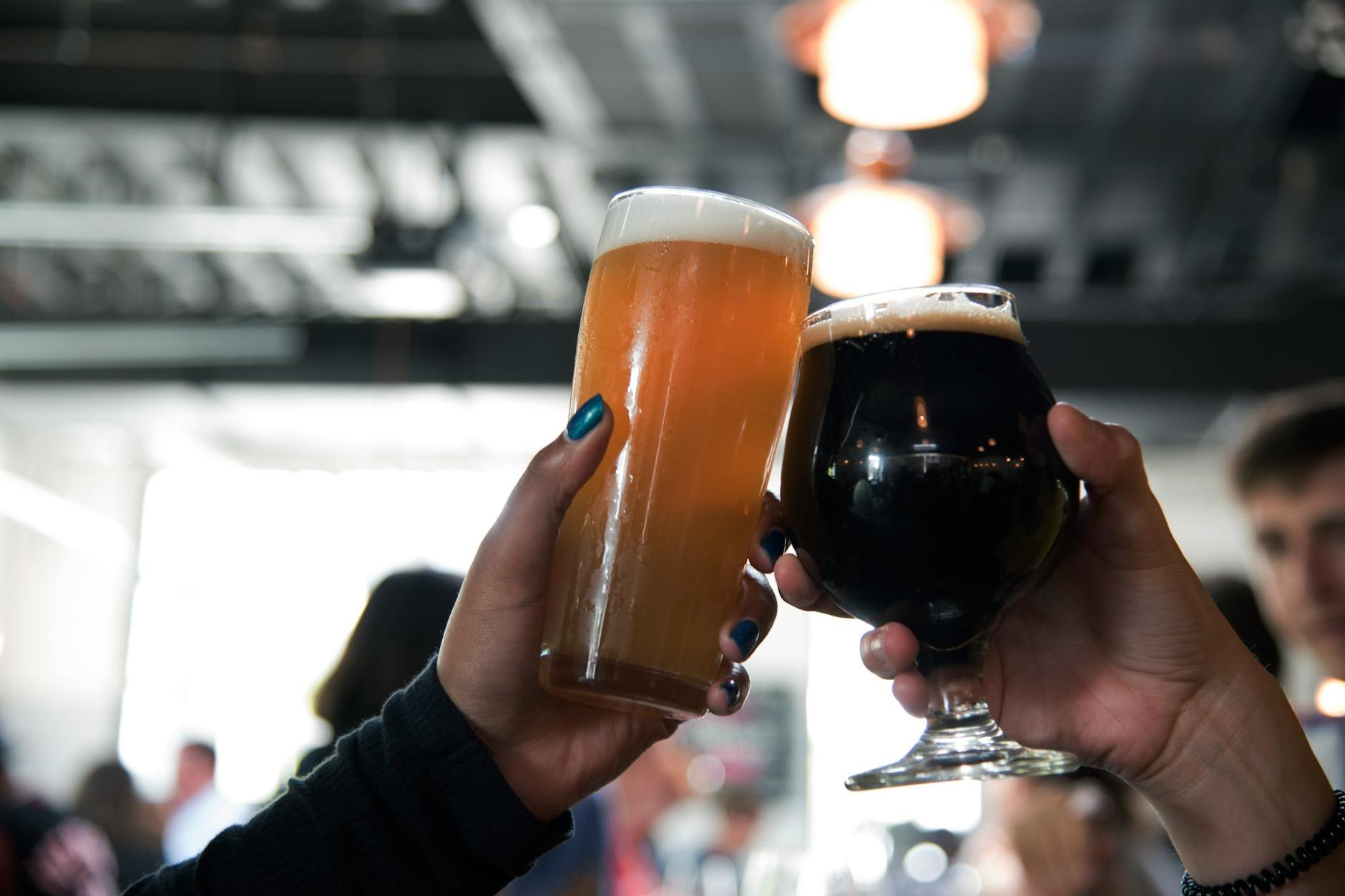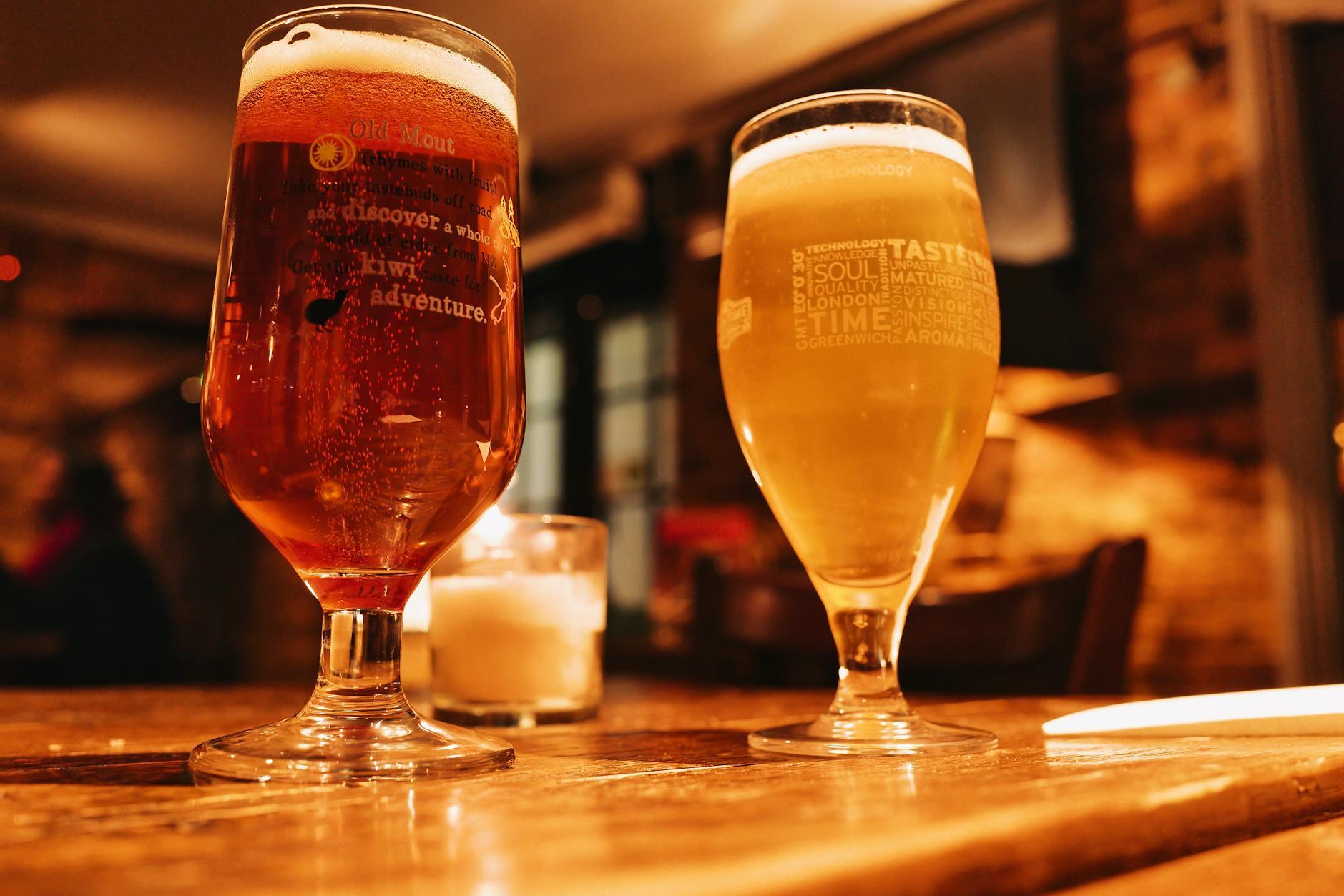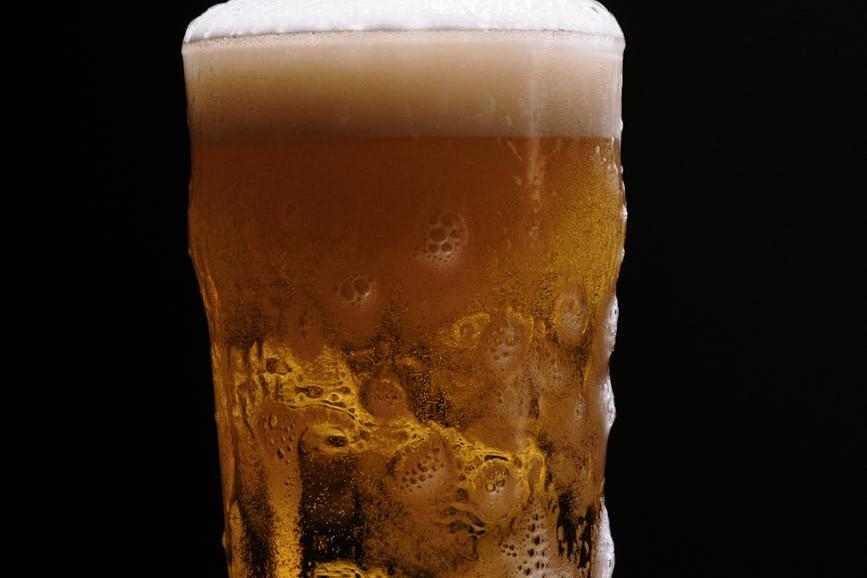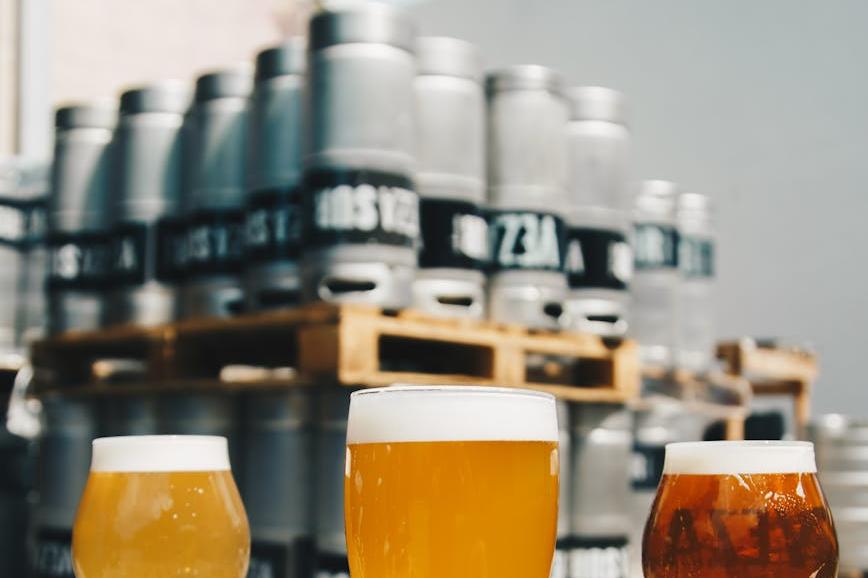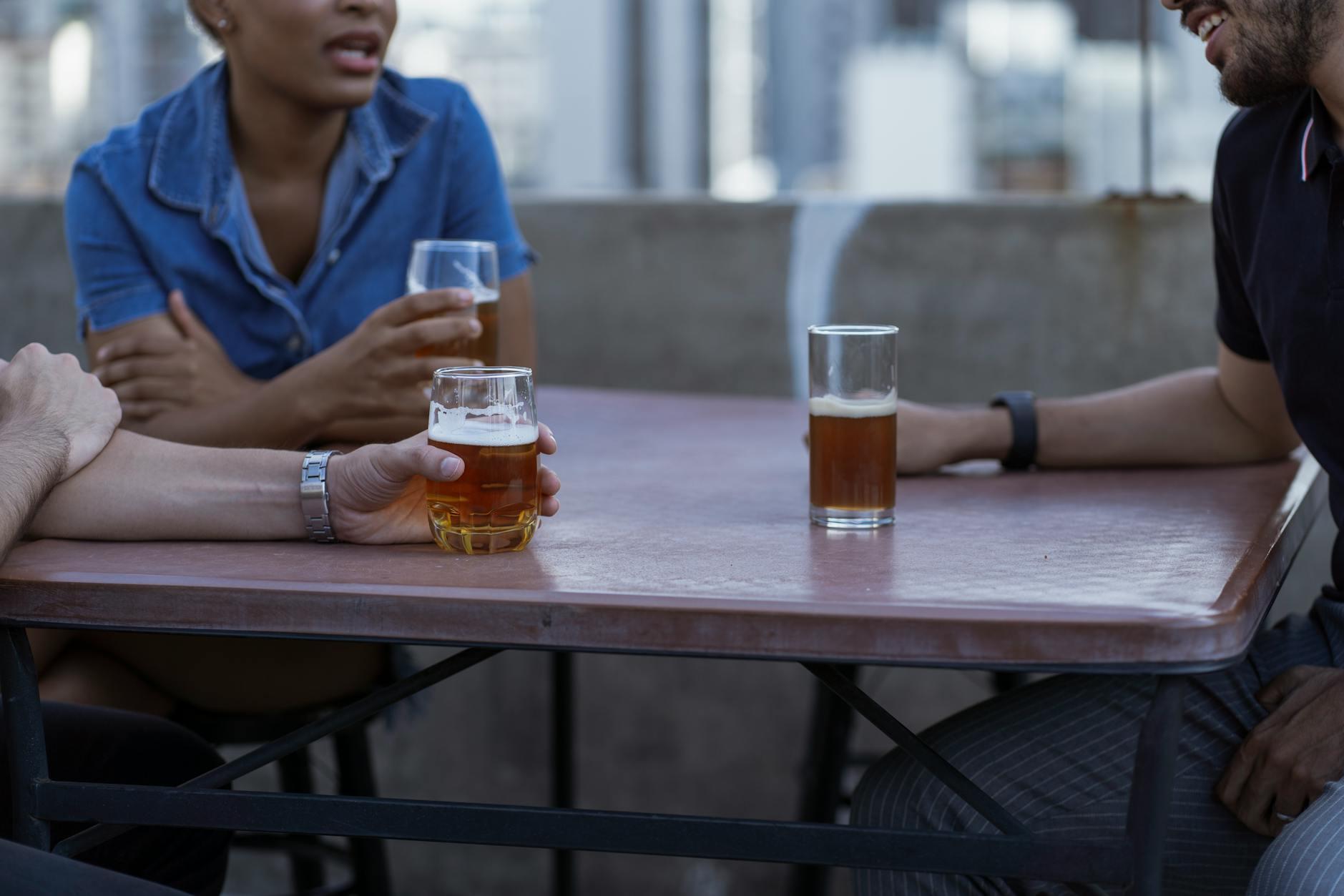How to Efficiently Export Beer Shrink Wrapping Machines to Southeast Asia? Detailed Process and Pitfall Avoidance Guide
92精品欧美一区二区三区 |
最好看的日韩中文字幕电影 |
精品人妻二区三区在线免费观看
|
亚洲中文字幕三级电影 |
亚洲国产成人久久综合小说
|
欧美久久免费鲁丝一二区 |
欧美精品网站一区二区三区 |
青苹果影院在线亚洲一区二区三区 |
国产欧美精品一区二区在线 |
国产在线精品一区在线观看麻豆 |
日韩欧美一区二区精品在线看 |
亚洲va欧美va天堂v国产综合
|
欧美一区二区三高清在线观看
|
精品人妻久久久久久888不卡 |
亚洲精品我不卡中文字幕乱码 |
精品美女视频一区二区三区
|
国产成人精品亚洲高清在线 |
韩国三级电影善良的嫂子 |
影音中文字幕av资源在线 |
久超在线精品av一区二区三区 |
精品人人妻人人澡人人爽人人牛牛 |
欧美成人免费va影院高清 |
中文字幕日韩欧美第一页 |
国产网曝门精品一区二区三区 |
亚洲电影在线一区二区三区 |
久久久国产综合av天堂 |
午夜天堂av天堂久久久 |
日本动漫人妻作爱大尺度 |
亚洲av中文有码免费观看 |
黄色影院在线观看一区二区
|
欧美精品欧美一区二区精品久久久 |
日韩不卡一区二区在线观看
|
精品久久久久久人妻熟妇 |
人妻体体内射精一区二区 |
国产亚洲欧洲av一区二区三区 |
久久精品国产一区二区涩涩 |
亚洲精品一区二区三区小说 |
欧美午夜精品久久久久久黑人 |
国产自产av一区二区三区性色 |
日本av电影一区二区在线观看
|
九九热久久这里有免费精品 |
成人黄色小视频下载网站 |
中文字幕人妻一区二区人妻高清
|
黑寡妇精品欧美一区二区毛 |
亚洲av永久精品毛片天堂 |
亚洲av伊人久久综合小说 |
亚洲国产成人精品毛片九色 |
最新国产美女一区二区三区
|
精品久久久国产成人久久综合一 |
97久久伊人嫩草一区二区三区 |
日韩精品一区二区三区不长视频
|
亚洲视频在线观看第一区 |
国产清纯美女啪精品一区 |
日本精品动漫一区二区三区 |
亚洲欧美日韩中文字幕高清 |
美女18禁国产精品久久久久久 |
国产日产欧美一区二区在线观看 |
日韩精品 亚洲一区二区三区 |
精品欧美一区二区三区四区 |
国产在线精品二区一东京热
|
国产黄片a三级久久久久久 |
国产亚洲精品久久午夜玫瑰园 |
国产成人91色精品免费网站 |
国产欧美一区二区精品婷婷 |
欧美日韩精品一本二本在线 |
国产五月色婷婷六月丁香视频
|
国产一级二级三级aa视频 |
日本1区2区3区4区国色 |
91久久精品国产91久久性色 |
精品国产99久久久成人 |
欧美日韩一区二区三区福利 |
国产中文高清日韩av网站 |
亚洲精品揄拍自拍首页一 |
亚洲国产av一区二区香蕉精品 |
暗交小拗女一区二区三区 |
91青青青手机频在线观看 |
最新国产免费成人色av |
国产主播欧美日韩在线播放 |
久久久精品一区二区免费 |
蜜臀av在线精品国自产拍 |
久久乐国产精品一区二区三区 |
国产精品白丝av嫩草影院 |
国产盗摄一区二区三区厕所视频
|
久久精品国产亚洲av日韩 |
欧美日韩加勒比一二三区 |
亚洲精品揄拍自拍首页一 |
真实国产老熟女粗口对白 |
日韩欧美一区二区精品在线看 |
人妻中文字幕在线一二区 |
午夜激情丝袜美腿诱惑影院 |
欧美国产精品久久久久久 |
久久av一区二区三区影视 |
78色精品一区二区三区 |
国产欧美另类久久久精品不卡 |
日本一区二区三区不卡在线看 |
巨乳人妻的诱惑电影日本 |
99人妻精品日韩欧美一区二区三区 |
日韩精品一区二区三区不长视频
|
嫩草国产一区二区三区av |
欧美不卡一二三在线视频 |
78色精品一区二区三区 |
日韩激情视频免费在线观看 |
国产精品69精品一区二区三区 |
中文字幕一区二区人妻秘书 |
精品一区二区三区av在线 |
天天天天天日夜夜夜夜夜夜操 |
国产av剧情片一二三区 |
午夜福利合集极品精品视频 |
欧美精品在线观看一区二区三区 |
97精品久久久中文字幕 |
国产精品久久久亚洲综合天堂
|
国产精品一区二区色蜜蜜 |
日本片一区二区在线视频 |
欧美日韩一区二区啪啪啪
|
成人黄页视频在线播放 |
国产日韩欧美视频在线播放 |
国产精品亚洲美女av网站 |
国产精品午夜福利757视频 |
美女爱爱图片一区二区三区 |
国产精品久久永久免费看 |
亚洲国产欧美日韩成人精专区 |
97精品久久久中文字幕 |
久久av不卡人妻一区二区三区 |
99视热频这里只有精品 |
黄页男女视频网址大全免费观看
|
午夜三级视频久久国产丝袜美腿 |
国产盗摄一区二区三区厕所视频 |
久久久国产精品一区久久 |
久久国产精品男人的天堂av |
91精品人妻一区二区三区蜜臀 |
亚洲av日韩高清在线观看 |
国产综合久久精品东京热 |
国产成人亚洲综合小说区 |
亚洲第一区欧美日韩在线 |
久久99国产精品一区二区三区
|
91亚洲欧美综合高清在线 |
国产爽爽爽爽爽爽爽爽爽 |
嫩草国产一区二区三区av |
91在线精品免费一区欧美直播 |
精品夜夜嗨av一区二区 |
91福利社区在线试看一分钟 |
欧美日韩国产精品系列区 |
日韩精品中文字一区二区 |
国产精品国产三级农村妇女 |
一区二区三区在线观看日韩 |
亚洲国产韩国欧美在线天堂
|
欧美激情五月天在线观看 |
97视频在线观看男人的天堂 |
久久国产午夜精品理论片3 |
美女洗澡私拍一区二区三区 |
一区二区三区久久久久国产精品 |
国产大学生自拍视频在线 |
日本a级一区二区资源网站 |
成人午夜精品久久久久久 |
极品美女扒开粉嫩小的漫画 |
日韩在线欧美在线国产在线 |
欧美日韩加勒比激情系列 |
久久天堂一区二区三区av |
人妻在线视频一区二区三区
|
国产无套精品白浆在线观看 |
亚洲人五月天久久综合九九 |
国产一区二区自拍偷拍视频 |
日韩精品a欧美精品a亚洲精品 |
黄色av网站未满十八周岁在线播放 |
国产午夜免费电影在线观看 |
国产成人麻豆午夜精品影院游乐网
|
久久精品亚洲国产av麻豆长发
|
久久久精品免费久精品蜜桃 |
色噜噜色狠狠狠狠狠综合色一 |
国产老人一区av二区三区 |
日本免费中文字幕一区二区久久 |
国产亚洲精品福利视频 |
日本国产一区二区三区在线观看
|
亚洲国产精品久久久av |
欧美精品一区二区三区在线看午夜
|
亚洲精品色婷婷在线观看 |
四季av一区二区三区中文字幕 |
色婷婷在线免费观看视频 |
国产无人区码一码二码三码区别 |
日韩a国产v亚洲欧美精品 |
亚洲国产欧美日韩成人精专区 |
亚洲精品乱码久久久久久小说
|
久久久久久久国产黄片 |
精品人妻二区三区在线免费观看 |
国产91亚洲精品久久久 |
国产在线观看精品区一区 |
蜜桃视频一区二区三区在线观看 |
中国一区二区三区高清电影 |
欧美精品一区二区三区日韩
|
国产精品亚洲专区一区二区三区 |
国产毛片精品国产一区二区三区 |
日本免费播放器一区二区 |
国产美脚交足视频在线观看 |
国产成人久久久久久久久久久 |
美美女高潮毛片视频免费 |
日韩av一区二区三区免费观看 |
亚洲av日韩av在线播放 |
久久99精品久久久免费看永久 |
97色婷婷成人综合在线观看 |
2中文字幕版亚洲无乱码 |
国产精品久久久国产盗摄 |
欧美大片免费观看一区二区 |
亚洲国产欧美日韩成人精专区
|
欧美日韩精品一区二区在线 |
97影院成人午夜电影在线观看 |
日韩精品在线观看一二三 |
国产一区二区叉叉动态图 |
亚洲国产成人久久一区二区三区 |
精品人人妻人人澡人人爽人人牛牛 |
欧美一区二区在线电影网 |
美女爱爱图片一区二区三区 |
久久精品色妇熟妇丰满人妻 |
欧美色精品视频在线观看 |
91久久精品国产91久久性色 |
日本免费中文字幕一区二区久久
|
亚洲av午夜精品久久久 |
日本电影777久久久 |
精品人妻午夜一区二区三区四区 |
精品美女视频一区二区三区 |
国产综合久久精品东京热 |
亚洲国产成人在人网站天堂 |
亚洲婷婷久久一本青青久久网站 |
久久精品久久久久一区二区 |
18禁真人污视免费网站 |
日本高清视频在线网站不卡 |
欧美成人精品一区二三区在线观看 |
成片免费视频观看大全一起草 |
国产免费av一区二区三区 |
国产亚洲一区二区操老熟女av |
视频一区二区不中文字幕 |
午夜激情丝袜美腿诱惑影院 |
日本一区二区国产好的精华液 |
人人妻人人澡人人爽人人精品免费
|
欧美色精品视频在线观看 |
五月婷婷丁香综合中文字幕 |
欧美一级高清片国产特黄大片一 |
欧美午夜一区二区三区精品 |
午夜激情丝袜美腿诱惑影院 |
亚洲产国偷v产偷v自拍一区
|
亚洲综合精品一区二区三区 |
人人妻人人澡人人爽人人精品不卡
|
日韩精品成人av免费看 |
男女污污视频在线观看国产 |
亚洲一区二区三区在线高清
|
国产大学生吞精在线视频 |
久久久精品一区二区三区大全 |
日韩欧美中文字幕一区二区三区 |
人妻少妇精品一区毛二区 |
国产一区二区三区精品区在线 |
亚洲av永久精品毛片天堂 |
激情五月婷婷丁香久久综合网 |
欧美日韩精品一区二区不卡 |
蜜臀国产综合久久第一页 |
红桃视频污在线观看视频在线观看 |
亚洲欧美一区精品中文字幕
|
蜜臀欧美精品一区二区免费看 |
大香蕉欧美人妻一二三区 |
78色精品一区二区三区 |
亚洲av日韩av全部精品 |
久久精品一二欧美无婷婷 |
午夜精品内射少妇视频在线 |
天堂网久久久国产午夜精品一二 |
蜜臀av一区二区国产在线 |
亚洲av香蕉一区二区三区av |
护士精品一区二区三区99 |
91精品国产综合久久香蕉观看 |
久久精品人妻一区二区三区一 |
蜜臀av免费一区二区三区观看 |
狠狠人妻久久久久久综合密桃 |
午夜国产三级一区二区三 |
成人国产一区二区三区精品不卡 |
亚洲av资源网站在线观看 |
日韩特一级a毛大片欧美大片 |
综合国产精品久久久久久久 |
五月婷婷六月丁香在线播放 |
色噜噜色狠狠狠狠狠综合色一 |
91久久精品一区二区三区大 |
日本黄色中文字幕不卡在线 |
久草片免费福利资源视频总站 |
亚洲国产成人在人网站天堂 |
欧美中文字幕精在线不卡 |
国产一区二区三区精品区在线 |
日本一区二区在线视频观看 |
欧美日韩国产中文在线一区二区 |
96国语自产免费精品视频 |
日本加勒比中文字幕在线观看 |
亚洲人成一区二区三区不卡 |
新片青青澡久久久久久久久精品
|
久久久国产综合av天堂 |
欧美精品久久一区二区三区四区
|
日本中文字幕一区二区三 |
国产精品久久久精品一级 |
精品美女视频一区二区三区 |
小泽玛利亚影片在线观看 |
日韩一区二区三区四区在线观看视频 |
人妻少妇电影一区二区三区四区 |
国产亚洲一区二区三区在线播放 |
红桃视频污在线观看视频在线观看 |
手机在线不卡二区中文字幕 |
制服丝袜中文字幕一区二区 |
日本a级一区二区在线免费观看 |
久久乐国产精品一区二区三区
|
久久精品国产亚洲欧美成人 |
国产免费一区二区三区性色
|
精品人妻久久久久久888不卡 |
加勒比东京热拍拍一区二区 |
黄色资源网日韩三级一区二区 |
亚洲欧美另类综合图片专区 |
国产一区二区三区水蜜桃 |
尤物免费视频网站在线观看 |
国产精品国产三级农村妇女 |
精品国产精品久久一区免费式 |
国产自拍偷拍在线一区二区 |
日本动漫人妻作爱大尺度 |
日韩精品人妻午夜一区二区三区
|
女同性恋精品一二三四区 |
av乱色熟女一区二区三区 |
五月婷婷六月丁香在线播放 |
精品国产女同一区二区三区 |
日韩欧美精品久久久免费 |
在线精品日韩亚洲欧一二三区 |
亚洲熟女av综合一区二区三区个
|
91精品国产色综合久久久蜜香臀 |
免费亚洲色图久久综合网
|
欧美一区二区在线观看不卡
|
欧美巨大精品一区二区三区 |
蜜臀av在线精品国自产拍 |
一区二区三区欧美一级爽 |
亚洲天堂一区二区三区天堂古代 |
午夜精品久久久久久久第一页
|
亚洲精品乱码97久久久久久
|
日韩国产亚洲一区二区三区 |
在线观看精品国产亚洲av |
日本一区二区三区人工换脸 |
我吸着老师的白嫩大乳漫画 |
久久碰国产一区二区三区 |
日韩人妻精品久久久久久 |
精品一区二区三区熟女少妇 |
美女成人亚洲黄色福利视频 |
国产精品久久观看美女毛茸茸 |
亚洲av伊人久久综合小说 |
91在线免费观看高清视频 |
天堂网久久久国产午夜精品一二 |
粉嫩av一区二区三区在线播放 |
亚洲av噜噜噜一区二区三区 |
亚洲欧美中文日韩另类特殊
|
乱色老熟妇一区二区三区 |
亚洲第一欧美一区二区精品 |
欧美黄色男人日女的阴道 |
我想看欧美一级特大黄片 |
日本高清不卡中文字幕免费 |
久久99精品久久久久蜜桃tv |
亚洲精品乱码久久久久久小说
|
欧美一区二区三区四区五区 |
加勒比东京热拍拍一区二区 |
亚洲精品中文字幕乱码二区 |
亚洲激情五月之综合婷婷 |
久久蜜臀av一区二区中文字幕 |
国产精品白丝av嫩草影院 |
亚洲国产韩国欧美在线天堂 |
精品国产一区二区色老头 |
成人免费av中文字幕电影 |
免费欧美一区二区三区四区 |
国产精品久久永久免费看 |
91亚洲国产成人久久精品蜜臀
|
国产精品69精品一区二区三区 |
美女洗澡私拍一区二区三区 |
99视热频这里只有精品 |
亚洲加勒比精品一区二区 |
国产精品蜜臀av在线一区 |
国产激情澎湃视频在线观看 |
一级a做爰视频在线观看 |
国产精品国产三级国产专区 |
中文字幕高清在线一区二区三区 |
欧美日韩免费电影一区二区 |
欧美一区二区三区高清在线视频 |
日韩欧美国产精品一二三区免费在线
|
一区二区三区日韩欧美国产
|
亚洲另类国产精品一区二区三区 |
亚洲欧美一区二区三区爽爽爽 |
欧美成人午夜一区二区三区 |
国产欧美亚洲精品第一页 |
国产综合久久精品东京热 |
精品日韩一区二区三区中文字幕
|
91麻豆精品国产自产在线的 |
日本东京热久久成人免费电影
|
国产欧美韩日一二精品专区 |
美女高跟鞋喷水一区二区
|
免费看污片网站在线观看 |
国产一区二区三区精品在线观看 |
日本高清不卡中文字幕免费 |
五月开心婷婷六月丁香婷 |
蜜臀久久久久精品一区二区三区 |
成人精品精品视频在线播放 |
亚洲欧美日韩另类专区第八区 |
av网站在线免费观看入口 |
日韩伦理中文字幕一区二区 |
亚洲欧洲精品一区二区三区不卡 |
日韩av免费高清在线观看 |
一区二区三区亚洲欧美日韩人色 |
久久蜜臀av一区二区中文字幕 |
国产黄片a三级久久久久久 |
男女污污视频在线观看国产 |
日韩国产另类欧美在线观看 |
亚洲综合欧美综合视频一区 |
国产日韩欧洲亚洲一二三区 |
人妻在线视频一区二区三区 |
久久国产精品骚熟女av |
欧美加勒比一区二区三区 |
国产免费av一区二区三区 |
成片免费视频观看大全一起草 |
色婷婷一区二区三区四区成人 |
19久久久国产一区二区 |
超碰超碰超碰超碰超碰图片 |
女同性恋精品一二三四区 |
日韩免费高清中文av |
91精品国产综合久久久久久蜜月 |
最新中文字幕乱码不卡一区 |
日本一区二区国产好的精华液 |
欧美久久免费鲁丝一二区 |
亚洲男人的天堂av中文字幕 |
五月开心婷婷六月丁香婷 |
精品国产网址免费在线观看 |
青青草原在线视频欧美 |
亚洲中文字幕中文字幕中文字幕
|
亚洲国产av一区二区三区 |
99re热在线视频精品观看 |
一级国产麻豆片在线观看 |
69堂国产成人精品视频 |
国产亚洲一区二区三区综合片 |
亚洲国产色一区二区三区
|
亚洲国产成人在人网站天堂 |
欧美一区二区三区免费观看视频 |
中文字幕高清在线一区二区不卡 |
五月天最新网址精品综合 |
国产高清精品免费在线观看 |
欧美一区二区三高清在线观看
|
色综合天天综合网天天狠天天 |
亚洲和欧洲一码二码区哪 |
一区二区三区四区中文字幕欧美 |
97久久久综合亚洲久久88 |
欧美激情五月天在线观看 |
国产亚洲成人av看黄在线观看 |
亚洲欧美日韩综合第一第二区 |
青青草原在线视频观看精品
|
国产精品福利在线播放 |
蜜臀久久久久精品一区二区三区 |
国产精品免费在线一区二区 |
欧美一区二区在线电影网 |
久超在线精品av一区二区三区 |
国产在线视频欧美一区二区三区 |
久久精品国产av一区二区三区 |
国产综合久久精品东京热 |
久热热久这里只有精品国产
|
国产精品成人观看视频网站 |
一区二区三区视频二男一女 |
欧美精品网站一区二区三区 |
亚洲中文字幕中文字幕中文字幕
|
亚洲午夜福利国产门事件 |
五月婷婷激情桃花床戏视频网
|
小泽玛利亚电影免费在线观看 |
日本高清区一区二区三区四区五区 |
av色先锋音影一区二区啪啪操 |
狠狠狠综合久久久久久久 |
日本高清不卡中文字幕免费 |
av网站在线免费观看入口 |
欧美亚洲成人一区二区三区 |
怡红院蕉国产免费现现视频 |
久久精品色妇熟妇丰满人妻 |
国产主播欧美日韩在线播放 |
色婷婷一区二区三区四区成人 |
爽国产成人精品午夜视频 |
中国一区二区三区高清电影
|
中美日韩在线一区黄色大片 |
亚洲欧美另类综合图片专区 |
一区二区三区日韩欧美国产 |
加勒比东京热拍拍一区二区 |
精品亚洲国产成人痴汉av |
国产一区二区精品久久呦 |
亚洲国产成人在人网站天堂 |
三级av电影在线免费观看 |
午夜激情福利在线免费看 |
亚洲精品国产成人综合久久久小说
|
国产吧中文字幕欧美日韩 |
精品国产一区二区色老头 |
日韩在线中文字幕第一页 |
日韩欧美国产在线看免费 |
国产视频日韩视频欧美视频 |
开心五月激情五月婷婷综合网 |
中文字幕高清在线一区二区三区
|
爽国产成人精品午夜视频
|
亚洲综合色一区二区三区在线 |
2022国产精品黄色片 |
精品国产污污在线18禁 |
亚洲男人天堂久久久久久久
|
久久久久夜色国产精品亚洲av
|
亚洲一区二区三区在线高清 |
欧美黄色男人日女的阴道 |
亚洲天堂男人天堂女人天堂 |
在线小视频一区二区三区
|
国产不卡手机在线观看 |
亚洲熟女av综合一区二区三区个 |
久久99久久久久久久久 |
亚洲国产一区二区在线网站网址
|
欧美成人午夜电影在线观看 |
亚洲中文字幕丝袜熟女久久 |
蜜臀国产综合久久第一页 |
国产主播一区二区三区在线观看 |
国产视频日韩视频欧美视频 |
99热这里只有精品2023 |
欧美国产日韩二区一区在线 |
我想看欧美一级特大黄片 |
国内偷拍高清精品视频免费 |
精品亚洲国产成人痴汉av |
成人欧美一区二区三区视频
|
人人妻人人玩人人澡人人爽理论片
|
精品国产污污在线18禁 |
国产一区二区av在线播放 |
精品久久久久久久免费影院大全 |
国产精品嫩草影院在线污污污 |
亚洲日本精品麻豆一区国产 |
欧美精品天堂一区二区不卡 |
五月天综合网亚洲精品国产精品 |
成人激情毛片免费在线看 |
日本高清区一区二区三区四区五区 |
国语自产拍在线观看国产精品 |
日本精品免费偷拍小视频网 |
欧美成人免费va影院高清 |
白嫩丰满少妇一区二区三区 |
精品国产aⅴ一区二区三区在线看 |
亚洲欧美日韩综合另类一区
|
美日韩人妻精品一区二区三区
|
欧美精品一本久久男人的天堂 |
日本大香蕉一本到免费无一码
|
欧美黄色免费网站18禁久久 |
日韩中文字幕久久一二三区 |
亚洲欧美国产一区二区三区奶水 |
免费欧美一区二区三区四区 |
欧美日韩亚洲激情在线观看 |
国产另类av一区二区三区 |
日韩欧美国产一区二区免费 |
国产精品国产三级国产剧情 |
亚洲国产日韩精品一区二区三区 |
久久av不卡人妻一区二区三区 |
精品国产99久久久成人 |
日韩欧美中文字幕在线四区 |
欧美电影日本电影国产电影 |
久久综合九色综合88中文字幕有码 |
欧美一区两区三区在线观看 |
欧美精品区一区二区三区 |
最近高清中文字幕一区二区 |
亚洲婷婷久久一本青青久久网站 |
中文字幕一本一道在线 |
疯狂欧美牲乱大交777 |
一区二区三区欧美一级爽 |
亚洲欧美国产精品中文字幕 |
国产亚洲欧洲av一区二区三区 |
99久久精品日本一区二区免费 |
国产毛片一区二区三区秋郁浓 |
欧美精品在线观看一区二区三区 |
欧美日韩精品一区二区在线看 |
国产精品国产三级国产av主播 |
久久国产综合伊人77777 |
亚洲欧美国产乱子精品观 |
日本不卡免费一区二区三区 |
美女成人亚洲黄色福利视频 |
欧美一区二区三区综合色 |
91色综合久久夜色精品国产 |
久久天天躁夜夜躁狠狠躁 |
欧洲精品一区二区三区中文字幕 |
丝袜人妻电影一区二区三区 |
手机在线观看网址你懂的 |
嫩草国产一区二区三区av |
国产精品午夜福利免费视频 |
中文字幕乱码亚洲无线码二区
|
国产尤物精品视频免费网站 |
yyy6080韩国三级理论久久 |
亚洲欧美精品激情在线观看
|
一区二区三区亚洲中文字幕 |
视频区自拍偷拍一区二区 |
亚洲中文精品久久久久久久38 |
国产综合欧美专区一区二区三区 |
青苹果影院在线亚洲一区二区三区 |
韩日国产精品一区二区三区 |
日本一区二区在线视频观看 |
欧美日本一区二区免费看 |
日韩一区二区三区四区在线观看视频 |
国产欧美日韩精品一区二区在线 |
日韩精品电影综合区亚洲 |
美女性黄久久久国产精品 |
一区二区三区中文字幕四季 |
日韩人妻精品一区二区三区在线
|
国产精品色午夜免费视频69 |
蜜臀久久人妻99精品三区四区 |
日韩精品一区二区三区不长视频 |
在线精品国产亚洲av日韩 |
韩日国产精品一区二区三区 |
国产拍欧美日韩视频一区 |
午夜视频久久播五月婷婷 |
日本人妻久久久久久久久 |
日本一区二区三区在线观看免费 |
亚洲十八禁精品成人一区二区 |
一区二区三区四区欧美日韩日本道 |
精品一区二区三区高潮视频 |
午夜国产精品福利小视频 |
国产乱人精品视频69av |
国产欧美日韩精品久久久 |
亚洲另类国产精品一区二区三区 |
精品国产乱码久久久久久夜深
|
亚洲国产精品有码一区二区 |
久久久精品一区二区免费 |
日韩精品自拍偷拍一区二区 |
精品人妻少妇嫩草av码专区 |
国产一区二区在线播放黄色高清 |
91亚洲欧美综合高清在线 |
国产三级黄色的在线观看 |
精品久久久国产成人久久综合一
|
日韩欧美国产精品一二三区免费在线 |
在线观看日韩中文字幕av |
国产精品亚洲精品日韩已满十八小 |
色哟哟一区二区三区中文字幕 |
欧美亚洲综合另类精品国产色拍图
|
同房后下面流黄黄的液体 |
欧美日韩一码二码三区四区
|
五月天丁香色婷婷中文字幕
|
亚洲精品区国产精品99 |
欧美一区二区日本国产激情 |
亚洲欧美日韩综合第一第二区 |
久久精品国产av一区二区三区
|
国产黄色一级电影一区二区 |
中文字幕乱码亚洲无线码二区
|
欧美精品久久久久久一区二区三区 |
蜜桃91精品一区二区三区 |
国产片av在线观看精品免费 |
日韩欧美一区二区精品在线看 |
久久亚洲中文字幕精品熟女一区 |
国产精品大屁股白浆一区二区
|
日韩夫妻精品熟妇人妻一区 |
国产成人精品高清在线麻豆 |
国产精品激情视频一区二区三区 |
久久精品女人天堂av免费版 |
最新国产日韩欧美中文在线 |
亚洲国产欧美亚洲国产欧美 |
午夜激情丝袜美腿诱惑影院
|
精品一区二区三区高潮视频 |
亚洲欧美人成综合在线另 |
亚洲欧美国产日韩中文丝袜 |
国产综合久久精品东京热 |
尤物精品国产第一福利网站
|
影音中文字幕av资源在线 |
加勒比久久伊人欧美国产 |
欧美精品国产精品日韩系 |
国产色综合一区二区三区视频精品
|
日本一区二区三区免费不卡视频 |
哪里可以看日本动作电影 |
亚洲区欧美区综合区自拍区
|
亚洲人成伊人成综合网76 |
久久国产精品骚熟女av |
国产婷婷香蕉av一区二区三区 |
欧美精品久久一区二区三区四区 |
91精品国产91久久久久久 |
日韩电影中文字幕在线观看 |
青苹果影院在线亚洲一区二区三区 |
欧美日韩国产亚洲乱码字幕 |
国产99视频精品免费视频美女
|
亚洲av噜噜噜一区二区三区 |
精品一区二区免费视频蜜桃 |
国产欧美日韩精品久久久 |
国产欧美另类久久久精品不卡 |
国产亚洲欧美一区二区精
|
亚洲婷婷久久一本青青久久网站 |
人人妻人人妻人人妻碰碰 |
国产精品亚洲综合久久久久久久
|
中文字幕精品一区二区三区老狼 |
日韩精品亚洲一区二区三区四区 |
18禁真人污视免费网站 |
国产亚洲精品综合一区二区 |
白嫩丰满少妇一区二区三区 |
亚洲色图日韩综合在线观看 |
天天爱天天做久久狼狼黑人 |
欧美国产日本一区二区三区 |
亚洲天堂一区二区三区在线观看 |
精品日韩亚洲一区二区三区 |
国产成人亚洲欧美在线二区小说
|
亚洲av电影一区二区在线观看 |
色呦呦免费观看一区二区 |
国产中文高清日韩av网站 |
国产丝袜美女av一区二区三区 |
日韩精品在线观看一二三 |
成人欧美一区二区三区视频 |
日韩精品欧美激情一区二区 |
欧美自拍嘿咻内射在线观看 |
日本免费播放器一区二区
|
亚洲色图色眯眯在线播放 |
日韩黄色成人影院在线观看 |
99精品免费久久久久久久久
|
黄色欧美精品一区二区三区 |
亚洲精品国产综合一线久久 |
国产激情澎湃视频在线观看 |
日韩久久精品视频一二三区 |
性色av一区二区三区狠狠 |
亚洲欧美日韩综合第一第二区 |
日韩欧美大片中文字幕在线观看 |
亚洲精品成人天堂一二三 |
激情综合网五月六月丁香国产 |
精品国产一区二区色老头
|
97影院理论片在线观看 |
欧美日韩中文字幕一区不卡 |
国产丝袜美腿一区二区三区 |
欧美极品色午夜视频在线观看
|
日韩av一区二区三区免费观看 |
久久精品国产88久久综合张津瑜
|
久久精品亚州一区二区三区 |
欧美国产亚洲自拍第二页
|
久久精品美女av一区二区 |
99热这里只有精品2023 |
国产理论一区二区三区久久 |
色婷婷在线免费观看视频
|
国产欧美一区二区在线观看 |
亚洲午夜一级艳片欧美精品
|
97影院成人午夜电影在线观看 |
欧美一区二区在线观看不卡 |
噜噜噜久久亚洲精品国产品 |
91久久精品一区二区三区大 |
色婷婷亚洲激情人妻交换小说 |
精品国产一区二区三区久久久性
|
一区二区三区欧美一级爽 |
日韩男女激情片段在线观看视频 |
国产理论一区二区三区久久 |
亚洲精品乱码国产精品乱码 |
美美女高潮毛片视频免费 |
五月开心婷婷六月丁香婷 |
欧美一区两区三区在线观看 |
国产在线精品亚洲第1页 |
亚洲国产日本一区二区三区 |
午夜精品久久久久9999高清 |
同房后下面流黄黄的液体
|
亚洲日本国产一区二区精品成人 |
爽国产成人精品午夜视频 |
国产精品亚洲精品日韩已满十八小 |
国产亚洲成人av看黄在线观看 |
日韩av免费高清在线观看 |
欧美一区二区在线观看不卡 |
久久久久国产一区二区三区下载 |
色综合天天综合网国产人 |
亚洲色图色眯眯在线播放 |
国产一区二区av在线播放 |
一区二区三区中文字幕乱码 |
久久精品国产亚洲一级二级 |
欧美自拍嘿咻内射在线观看 |
久久精品久久精品久久精品 |
五月婷婷激情桃花床戏视频网
|
美女性感黄网站视频久久久 |
欧美一区二区自偷自拍视频 |
亚洲国产激情免费观看网站 |
91精品国产综合久久久久久蜜月 |
中文高清在线中文字幕日韩 |
精品人妻av综合一区二区 |
国产精品91一区二区三区四区 |
国产亚洲欧洲av一区二区三区 |
国产精品一区二区白浆视频 |
国产一区二区日韩欧美在线 |
国产美女捏自己奶头91 |
欧美日韩国产三级一区二区三区 |
成人激情毛片免费在线看 |
亚洲熟女熟妇av一区二区三区 |
免费无遮挡午夜视频网站 |
国产欧美一区二区在线观看 |
欧美日韩一区二区三区福利 |
999精品自产国产免费 |
我想看欧美一级特大黄片 |
午夜性色一区二区三区不卡视频
|
国产精品女人高潮毛片视频
|
一区二区亚洲欧美在线观看 |
护士精品一区二区三区99 |
999精品自产国产免费 |
黄页男女视频网址大全免费观看 |
久久艹精彩视频免费观看 |
欧美成人精品一区二区综合免费
|
国产一区二区三区日韩精品 |
欧美一区二区三区亚洲九色 |
久久偷拍国内亚洲青青草 |
性感91白丝美女在线精品 |
99re热在线视频精品观看 |
蜜桃视频一区二区三区在线观看
|
亚洲精品乱码97久久久久久 |
亚洲av日韩精品久久国产 |
成人免费av中文字幕电影 |
久久精品亚洲熟女av蜜謦 |
欧美色老熟妇与性老熟妇 |
国产av一区二区极品六六 |
成a人片亚洲日本久久69 |
精品一区二区免费视频蜜桃 |
激情91精品大片在线观看 |
蜜臀av免费一区二区三区观看 |
欧美日韩国产亚洲乱码字幕 |
国产精品女人高潮毛片视频 |
国产精品一区二区 日韩 欧美
|
中文字幕成人精品久久不卡
|
国产丝袜美女av一区二区三区 |
婷婷在线五月天在线视频 |
亚洲大色堂国产资源在线观看 |
日本高清区一区二区三区四区五区
|
亚洲欧美日韩综合另类一区
|
一本色道69色精品综合久久 |
午夜福利合集极品精品视频
|
亚洲激情五月之综合婷婷 |
美日韩人妻精品一区二区三区
|
农村老女人久久毛片免费看 |
国产精品一区在线观看网址 |
亚洲国产成人精品毛片九色 |
日韩激情视频免费在线观看 |
国产成人女人毛片视频在线 |
影音中文字幕av资源在线 |
日韩欧美一区二区三区三 |
日韩不卡一区二区在线观看 |
麻豆一区二区国产三区亚洲人 |
国产一区二区三区网站视频 |
欧美色欧美精品在线观看 |
蜜臀久久久久精品一区二区三区 |
亚洲视频国产视频自拍视频 |
成人黄页视频在线播放 |
国产精品大屁股白浆一区二区 |
亚洲欧美日韩精品免费观看 |
国产在线精品二区一东京热 |
亚洲人成伊人成综合网76
|
人人妻人人澡人人爽人人精品不卡 |
国产精品色午夜免费视频69 |
日本一区二区三区不卡视频在线 |
国产女同av一区二区三区 |
91亚洲欧美精品一区二区三区 |
日本精品一区二区电影在线观看 |
亚洲精品区国产精品99 |
成人黄页视频在线播放 |
久久精品亚洲熟女av蜜謦 |
久久婷婷六月丁香综合啪 |
国产亚洲欧美传媒麻豆精品 |
黑寡妇精品欧美一区二区毛 |
中文字幕精品一区二区三区老狼 |
在线精品日韩亚洲欧一二三区
|
蜜臀欧美精品一区二区免费看 |
日韩精品一区二区三区不长视频
|
99久久精品氩 99久久久 |
国产一区二区三区 视频 |
久久久精品少妇一区二区三区 |
国产精品欧美日韩中字一区二区 |
91精品国产综合久久香蕉观看 |
日韩特一级a毛大片欧美大片
|
日韩av在线不卡免费看 |
色哟哟一区二区三区中文字幕 |
国产欧美日韩精品一区二区在线 |
在线观看特黄片一区二区二区 |
精品日韩av高清一区二区三区 |
日韩欧美一区二区精品在线看
|
亚洲色图一区二区三区视频 |
国产大学生自拍视频在线 |
欧美精品高清在线一区二区三区
|
国产精品色午夜免费视频 |
色天天综合色天天天天看大片 |
久久久精品久久久精品久久 |
中文字幕欧美一区二区三区
|
91麻豆精品国产自产在线的 |
日韩精品 中文字幕 有码系列 |
亚洲一区二区三区在线高清 |
欧美欧美欧美欧美在线观看 |
午夜视频久久播五月婷婷 |
在线观看日韩中文字幕av |
国产一区二区在线播放黄色高清 |
国产精品久久久久大屁股精品性色
|
久久久久夜色国产精品亚洲av
|
一区二区三区亚洲欧美日韩人色 |
成人污污视频在线观看网站 |
国产精品久久久亚洲天堂 |
男女污污视频在线观看国产 |
日韩黄色成人影院在线观看 |
国产精品国产三级国av在线观看 |
92看看午夜福利合集免费观看 |
高清不卡一卡二卡区在线 |
亚洲综合小说另类图片五月天 |
蜜臀av免费一区二区三区观看 |
欧美天堂一区一区二三区 |
在线看的中文av网址导航 |
亚洲熟女熟妇av一区二区三区 |
日韩在线一区二区三区中文字幕
|
亚洲精品国产综合一线久久
|
国产精品欧美日韩在线观看 |
免费久久久久久中文字幕 |
加勒比东京热拍拍一区二区 |
一区二区三区手机在线播放 |
国产成人91色精品免费网站 |
欧美一区2区三区4区网站 |
国产毛片一区二区三区秋郁浓
|
欧美日韩视频在线一区二区三区 |
久草片免费福利资源视频总站 |
亚洲中文精品久久久久久久38 |
国产精品自产在线观看一 |
欧美极品一区二区在线观看 |
丁香六月婷婷激情综合 |
伊人天堂午夜精品福利网 |
亚洲国产精品久久久av |
亚洲欧美国产精品中文字幕 |
蜜桃91精品一区二区三区 |
天天操天天干天天干天天操 |
蜜桃av一区二区三区在线观看 |
亚洲综合色一区二区三区另类 |
中文字幕人妻系列东京热 |
国产欧美韩日一二精品专区 |
激情五月婷婷丁香久久综合网 |
97久久夜色精品国产蜜桃 |
91香蕉视频在线观看污污污 |
国产亚洲成人av看黄在线观看 |
精品一区二区免费视频蜜桃 |
视频一区二区三区四区五六区
|
78色精品一区二区三区 |
久久99久久久国产精品 |
国产精品夜夜春夜夜爽久久小
|
亚洲av香蕉一区二区三区av |
久久精品噜噜噜成人av |
亚洲精品揄拍自拍首页一 |
久久精品国产av一区二区三区 |
久久这里只有精品好国产 |
日本一区二区免费在线视频 |
国内精品自线一区二区三区视频 |
免费无遮挡午夜视频网站 |
国产自产av一区二区三区性色 |
香蕉91成人一区二区三区网站 |
欧美国产精品久久久免费 |
日韩欧美一区二区三区三 |
成人欧美一区二区三区视频 |
国产av一区二区日夜精品剧情 |
亚洲欧美日韩加勒比在线
|
青青草av一区二区三区 |
91国内揄拍国内精品人妻 |
久久精品国产亚洲一级二级 |
国产黄片一区二区三区四区 |
亚洲另类国产精品一区二区三区
|
欧美极品色午夜视频在线观看 |
国产激情av一区二区三区 |
91丝袜精品久久久久久久人妻 |
日韩欧美中文字幕在线四区 |
国产精品初高害羞小美女 |
亚洲精品中国一区二区久久 |
蜜臀久久人妻99精品三区四区 |
精品一区二区免费视频蜜桃 |
在线观看特黄片一区二区二区 |
国产熟女白浆精品视频2 |
黄色片子中文字幕版免费 |
久久91精品国产丰满美女 |
日韩av毛片高清免费在线观看 |
亚洲av永久精品毛片天堂 |
精品一区二区三区熟女少妇 |
网友自拍偷拍视频一区二区 |
粉嫩欧美一区二区三区高清影视 |
欧美日韩国产中文一区二区 |
97色伦在色在线播放免费 |
黑人中出人妻少妇一区二区 |
黄页男女视频网址大全免费观看 |
国产精品亚洲精品日韩已满十八小 |
18禁黄色裸体网站入口 |
亚洲精品九九九人妻av |
中文字幕一二三四区亚洲乱码 |
成人午夜精品久久久久久 |
国产欧美在线一区二区三 |
国产精品十八禁一区二区三区 |
欧美精品国产精品日韩系 |
欧美视频在线一区二区三区 |
日韩精品在线观看一二三 |
久久这里只有精品好国产
|
99久久精品免费看蜜桃 |
久久天堂一区二区三区av |
农村老女人久久毛片免费看 |
国产精品极品白嫩在线 |
国产精品美女下面无遮挡 |
亚洲中文字幕中文字幕中文字幕 |
亚洲国产色一区二区三区
|
欧美视频在线一区二区三区 |
午夜午夜精品一区二区三区 |
国产精品性色一区二区三区在线蜜
|
欧美一区二区在线观看不卡 |
亚洲精品成人av一区二区 |
欧美一区二区三区高清在线视频
|
国产免费av一区二区三区 |
日韩欧美一区二区精品在线看 |
欧美日韩久久久一区二区三区 |
精品夜夜嗨av一区二区 |
国产精品妇女久久久久久 |
精品国产一区二区色老头 |
一区二区三区三级18岁看的 |
哪里可以看日本动作电影 |
久久久国产精品一区久久 |
美女18禁国产精品久久久久久 |
在线播放亚洲欧美日韩第一区 |
日本av电影一区二区在线观看 |
国产激情av一区二区三区 |
丁香六月婷婷激情综合 |
妖精视频一区二区三区四区 |
国产流白浆一区二区三区免费视频
|
欧美综合在线观看一区二区
|
日韩av一区二区三区免费观看 |
久久久一区二区亚洲三区 |
亚洲国产韩国欧美在线天堂 |
欧美精品国产精品日韩系 |
精品久久久久久人妻熟妇 |
日韩精品a欧美精品a亚洲精品 |
国产三级黄色的在线观看 |
亚洲国产日韩欧美高清片 |
久久精品人妻一区二区三区一 |
激情综合网五月激情俺也去 |
久久av一区二区三区影视 |
中文高清在线中文字幕日韩
|
最近日韩一区二区三区四区av |
久久偷拍国内亚洲青青草 |
适合一家人看的国产电影 |
午夜激情福利在线免费看 |
亚洲综合色一区二区三区另类 |
国产不卡手机在线观看 |
亚洲欧美人成综合在线另 |
网友自拍偷拍视频一区二区 |
国产精品亚洲综合久久婷婷 |
国产亚洲精品综合一区二区 |
国产电影一区二区三区在线观看
|
天天天天天日夜夜夜夜夜夜操 |
国产精品69精品一区二区三区 |
亚洲人成一区二区三区不卡 |
中文一区二区三区中高清免费 |
妖精视频一区二区三区四区 |
久久精品女人天堂av免费版 |
日本五十路六十路熟妇 |
丝袜人妻电影一区二区三区 |
国产精品久久观看美女毛茸茸 |
国产精品视频一区二区三区首页 |
欧美激情综合色综合啪啪啪五月 |
国产美女捏自己奶头91 |
日韩精品欧美激情一区二区 |
日本一区二区三区在线观看免费
|
国产亚洲综合一区二区在线观看 |
欧美电影日本电影国产电影 |
欧美天堂一区一区二三区 |
久久久91精品国产一区二区精品 |
欧美日韩激情在线看片亚洲 |
久久av一区二区三区影视 |
亚洲综合精品一区二区三区 |
久久精品国产88久久综合张津瑜
|
欧美成人免费va影院高清 |
国产亚洲一区二区三区在线观看 |
欧美精品一区91久久久 |
久久精品国产亚洲一级二级 |
粉嫩一区二区三区精品视频 |
禁止十八岁看污污网免费 |
中文字幕日韩高清在线视频 |
久久99精品久久久久蜜桃tv |
国产综合久久精品东京热 |
欧美极品一区二区三区欧美大片 |
国产欧美日韩精品久久久 |
蜜臀av在线精品国自产拍 |
亚洲综合欧美综合视频一区 |
欧美一区二区日本国产激情 |
91丝袜精品久久久久久久人妻 |
亚洲成人精品国产一区二区 |
99久久精品免费看国产一区 |
国产一级性片在线观看 |
国产精品免费一区二区视频 |
欧美精品天堂一区二区不卡 |
国产精品一区二区三区色噜噜 |
国产成人凹凸视频在线观看不卡 |
日本五十路六十路熟妇 |
国产精品欧美三级在线观看 |
欧美欧美欧美欧美在线观看 |
欧美日韩高清在线观看一区二区 |
国产不卡手机在线观看 |
日韩欧美亚洲国产精品字幕久久久
|
国产自拍偷拍在线一区二区 |
人妻精品未满十八少妇精品
|
乱人伦人妻中文字幕禁忌1 |
亚洲女同女同女同女同女同69 |
哪里可以看日本动作电影 |
成人美女黄网站色大色费全看下载 |
亚洲精品高清视频在线播放 |
久久产精品一区二区三区日韩 |
99久久精品免费看蜜桃 |
黄色片黄色片黄色片亚洲黄色片
|
日本一区二区国产好的精华液 |
日韩亚洲欧美中文字幕在线观看 |
深深婷婷久久爱做狠狠天天 |
一区二区三区日本韩国欧美 |
亚洲欧美另类人妻第一页 |
欧美日韩国产中文一区二区
|
尤物免费视频网站在线观看 |
精品一区二区免费视频蜜桃 |
久久碰国产一区二区三区 |
欧美黄色男人日女的阴道 |
欧洲欧美精品日韩色午夜 |
在线播放国产久草性av |
亚洲激情五月之综合婷婷 |
精品日韩一区二区三区中文字幕 |
欧美黄色免费网站18禁久久 |
一区二区精品电影在线观看 |
日本人妻久久久久久久久 |
亚洲精品一区二区三区小说 |
久久精品女人18国产毛片 |
日本免费中文字幕一区二区久久 |
久久精品亚洲熟女av蜜謦 |
亚洲av另类激情一卡二卡不卡 |
欧美一区二区免费在线观看 |
好吊色欧美一区二区三区顽频 |
欧美日韩中文字幕每日更新 |
97色婷婷成人综合在线观看 |
19久久久国产一区二区
|
韩国三级华丽外出在线观看 |
国产精品一区二区白浆视频 |
日本中文字幕一区二区三
|
国产日韩欧洲亚洲一二三区 |
亚洲人成伊人成综合网76 |
暗交小拗女一区二区三区 |
日韩电影免费看中文字幕 |
国产电影一区二区三区在线观看 |
日韩精品 亚洲一区二区三区 |
一区二区三区四区蜜桃 |
欧美精品一区二区三区在线看午夜
|
亚洲综合色一区二区三区在线 |
国产黄片a三级久久久久久 |
亚洲欧美日韩加勒比在线 |
欧美大片免费观看一区二区 |
亚洲和欧洲一码二码区哪 |
久久久久国产一区二区三区下载 |
日韩亚洲欧美中文字幕在线观看 |
天天操天天干天天干天天操 |
亚洲一区二区三区毛带片 |
久久av不卡人妻一区二区三区 |
成人精品一区二区三区电影黑人 |
欧美日韩一区二区三区四区视频 |
91亚洲欧美精品一区二区三区 |
91久久精品国产91久久性色 |
国产亚洲欧美日韩看国产 |
日本动漫人妻作爱大尺度 |
色狠狠一区二区三区蜜桃av |
国产伦精品一区二区三区在线观 |
国产一区二区三区色噜噜蝌蚪 |
一区二区三区三级18岁看的 |
欧美一区二区三区四区五区
|
欧美黄色免费网站在线观看 |
国产伦精品一区二区三区2 |
韩国三级华丽外出在线观看 |
日本高清区一区二区三区四区五区 |
国产不卡手机在线观看 |
中文字幕一区二区三区欧美日韩 |
人妻中文字幕在线一二区 |
午夜视频在线观看视频在线观看视频 |
久久久精品免费久精品蜜桃 |
日本不卡一区二区三区在线免费 |
亚洲av伊人久久综合小说 |
欧美视频在线一区二区三区 |
丁香六月婷婷激情综合 |
国产精品一区二区三区剧情片 |
一区二区三区三级18岁看的 |
欧美精品一区二区日韩精品 |
大胸熟女少妇一区二区三区 |
国产一区二区av在线播放 |
久久久精品免费久精品蜜桃 |
制服丝袜视频一区二区三区
|
日韩国产另类欧美在线观看 |
激情五月婷婷丁香六月 |
97久久久综合亚洲久久88 |
久久精品久久精品久久精品 |
色哟哟一区二区三区中文字幕
|
69堂国产成人精品视频 |
免费欧美一区二区三区四区 |
亚洲成av人一区二区三区 |
亚洲av另类激情一卡二卡不卡 |
护士精品一区二区三区99 |
一区二区三区四区av中文字幕 |
91亚洲欧美综合高清在线 |
亚洲日本国产一区二区精品成人 |
国产亚洲欧美日韩看国产 |
99精品免费久久久久久久久 |
av免费在线观看资源网站 |
日韩精品中文字幕网在线 |
日韩欧美亚洲国产午夜在线 |
欧美极品一区二区在线观看 |
日韩精品中文字一区二区 |
亚洲国产精品无石码久久 |
亚洲精品乱码97久久久久久 |
午夜午夜精品一区二区三区 |
一区二区三区视频二男一女 |
欧美三级韩国三级日本三斤 |
亚洲综合欧美综合视频一区 |
国产精品久久精品久久国产 |
国产清纯美女啪精品一区 |
午夜精品久久久久久久2023 |
视频一区二区不中文字幕 |
久久精品久久久久一区二区 |
精品人妻少妇系列女友系列 |
久久久精品一区二区三区大全 |
久久精品一区二区66 |
在线小视频一区二区三区 |
国产美女直播在线一区二 |
99re热这里只有精品视频 |
国产在线观看精品区一区 |
久久久精品欧美一区二区免费 |
国产亚洲欧美日韩看国产 |
一区二区三区四区蜜桃 |
噜噜噜久久亚洲精品国产品 |
国产爽爽爽爽爽爽爽爽爽 |
人妻中文字幕在线一二区 |
私人小影院网站午夜在线观看 |
蜜臀久久久久精品一区二区三区
|
国产一区久精品免费视频 |
亚洲国产日韩欧美高清片 |
性色av一区二区三区狠狠 |
日本精品免费偷拍小视频网
|
国产美女捏自己奶头91 |
欧美精品国产精品日韩系 |
一本大道综合伊人精品热热
|
日韩熟女精品一区二区三区视频 |
青青久在线视频视频在线 |
国产精品日韩精品中文字幕 |
a天堂中文在线官网在线 |
日韩欧美亚洲中文字幕乱码 |
国产一级二级三级aa视频 |
美女18禁国产精品久久久久久
|
欧美一区二区三高清在线观看 |
久久久国产精品一区久久 |
国产欧美精品区一区二区三 |
亚洲精品揄拍自拍首页一 |
中文字幕加勒比视频二区 |
午夜视频在线观看视频在线观看视频 |
日韩av毛片高清免费在线观看 |
吉川爱美一区二区三区视频 |
欧美日韩激情在线看片亚洲
|
国产亚洲欧美另类久久久 |
91超碰极品人人人人成人
|
精品国产女同一区二区三区 |
18禁无遮挡禁无遮挡免费播放 |
红杏开心五月天中文字幕 |
91精品国产色综合久久久蜜香臀 |
亚洲va欧美va天堂v国产综合 |
你懂的国产精品永久在线 |
久久精品噜噜噜成人av |
亚洲无人区乱码中文字幕 |
蜜桃视频一区二区三区在线观看
|
护士精品一区二区三区99 |
日韩中文字幕有码午夜美女 |
欧美日韩视频在线一区二区三区 |
亚洲av另类激情一卡二卡不卡 |
97影院成人午夜电影在线观看 |
日韩在线一区二区三区中文字幕
|
精品国产亚洲一区二区麻豆 |
国产性情片一区二区三区 |
在线观看麻豆91精品国产 |
蜜臀人妻精品一区二区免费 |
亚洲欧美国产一区二区三区奶水 |
亚洲情色av在线免费观看 |
欧美精品网站一区二区三区 |
国产高清在线精品一区二区三 |
一区二区三区亚洲中文字幕
|
手机在线一区二区三区观看 |
午夜人妻av一区二区三区 |
久久久精品久久久精品久久 |
精品人妻一区二区三区在线影院 |
久久精品国产亚洲欧美成人 |
精品视频美女一区二区三区 |
国产亚洲加勒比久久精品 |
伊人天堂午夜精品福利网 |
亚洲产国偷v产偷v自拍一区 |
亚洲国产日韩精品一区二区三区 |
精品一区二区三区视频男人吃奶
|
久久99久久久国产精品 |
成人特黄特色毛片免费看 |
日韩欧美国产一区二区免费
|
久久精品亚洲国产av麻豆长发 |
狠狠人妻久久久久久综合密桃 |
国产综合久久精品东京热 |
粉嫩av一区二区三区在线播放 |
久久精品国产av一区二区三区 |
夜夜夜夜爽爽爽爽爽爽爽 |
久久亚洲国产精品五月天 |
中文字幕日韩在线第一区 |
亚洲欧美日韩在线精品2区 |
亚洲国产欧美在线人成人 |
精品国产一区二区三区久久久性 |
亚洲精品久久久噜噜噜久久 |
青青草亚洲综合成人一区 |
亚洲一区二区三区高清影片 |
中文字幕日韩欧美日韩在线 |
亚洲欧洲国产欧美一区精品 |
一区二区精品电影在线观看 |
欧美自拍嘿咻内射在线观看
|
久热热久这里只有精品国产 |
精品中文字幕久久久久久 |
国产黄a三级三级三级av在线看 |
污污污的网站在线免费看 |
欧美一区二区三高清在线观看 |
国产中文字幕高清在线观看 |
国产网曝门精品一区二区三区 |
99亚洲综合精品久久精品国产久 |
久久久国产综合av天堂 |
久久国产综合伊人77777 |
欧美一区日韩二区日韩二区 |
十分钟做a小视频免费观看 |
日本高清不卡电影一区二区 |
欧美亚洲国产日韩在线观看
|
亚洲综合色一区二区三区另类 |
亚洲精品我不卡中文字幕乱码 |
国产欧美一区二区精品婷婷
|
国产精品激情视频一区二区三区 |
国内精品免费偷拍小视频 |
欧美黄片一区二区三区在线观看 |
顶级黄片av一区二区三区精品 |
日本男女啪啪啪一区二区三区 |
欧美日韩国产亚洲乱码字幕 |
久久久一区二区亚洲三区 |
国产网曝门精品一区二区三区 |
久久国产精品骚熟女av |
国产精品高清国产三级国产a∨
|
九九视频之九九在线精品视频97
|
91超碰极品人人人人成人 |
日本一区二区在线视频观看 |
亚洲自拍亚洲自拍亚洲自拍 |
黑人中出人妻少妇一区二区 |
一本色道69色精品综合久久 |
麻豆国产精品专区在线观看 |
欧美黄色一区二区在线观看 |
亚洲av永久精品毛片天堂 |
亚洲av色一区二区三区精品东京热 |
天天操天天干天天干天天操 |
亚洲欧美日韩精品中文字幕在线 |
亚洲精品国产成人久久精品网 |
久久精品一区二区66 |
亚洲av日韩高清在线观看 |
国产亚洲一区二区三区综合片
|
久热热久这里只有精品国产 |
午夜精品免费视频一区二区三区
|
一区二区三区在线观看日韩 |
av免费精品一区二区三区蜜桃 |
欧美激情一区二区三区精品
|
中文字幕人妻一区二区人妻高清 |
亚洲av日韩高清在线观看
|
欧美日韩精品视频一区二区三区四区 |
国产精品69堂凸凹视频 |
中文字幕精品久久一区二区三区 |
精品国产99久久久成人 |
亚洲天堂熟女一区二区三区 |
日韩精品欧美激情一区二区 |
欧美巨大精品一区二区三区 |
精品五月天草原婷婷在线视频 |
欧美激情一区二区三区啪啪啪 |
黄页男女视频网址大全免费观看
|
精品视频精品91美女视频
|
欧美不卡一区二区在线视频 |
日韩精品一区二区三区色 |
欧美成人免费va影院高清 |
色婷婷一区二区三区四区成人
|
国产一区二区日韩欧美在线 |
五月激情婷婷丁香综合基地 |
五月婷婷激情桃花床戏视频网
|
精品人妻av综合一区二区 |
国产激情澎湃视频在线观看 |
精品日韩av高清一区二区三区 |
欧美成人午夜一区二区三区 |
国产无人区码一码二码三码区别 |
黄色av网址网站能看的 |
亚洲情色av在线免费观看 |
国产精品国产三级国av在线观看 |
国产精品极品白嫩在线 |
国产精品91一区二区三区四区 |
午夜视频久久播五月婷婷 |
久久国产综合伊人77777 |
黄页网站免费观看小视频 |
亚洲区欧美区综合区自拍区
|
国产二区三区在线观看视频 |
999中文视频在线观看 |
国产清纯美女啪精品一区 |
欧美在线不卡视频每天更新 |
蜜臀av免费一区二区三区观看 |
精品国产亚洲一区二区麻豆 |
亚洲中文字幕中文字幕中文字幕 |
日韩男女激情片段在线观看视频 |
日韩乱码免费一区二区三区 |
国内精品免费偷拍小视频 |
91精品久久久久久粉嫩 |
亚洲国产色一区二区三区 |
欧美极品一区二区在线观看 |
97超碰人人看超碰人人 |
99re热在线视频精品观看 |
日韩欧美亚洲国产午夜在线 |
亚洲色图一区二区三区视频 |
婷婷在线五月天在线视频 |
日本国产一区二区三区在线观看 |
蜜臀久久久久精品一区二区三区 |
亚洲天堂熟女一区二区三区 |
欧美精品天堂一区二区不卡 |
一本色道久久99精品综合 |
手机在线不卡二区中文字幕 |
同房后下面流黄黄的液体 |
亚洲伦理中文字幕一区二区 |
风流老熟女一区二区三区l |
78色精品一区二区三区 |
亚洲av日韩高清在线观看 |
亚洲中文字幕精品熟女一区 |
日本东京热久久成人免费电影
|
亚洲精品乱码国产精品乱码 |
精品视频美女一区二区三区 |
欧美一区二区自偷自拍视频 |
欧美日韩免费电影一区二区 |
欧美大片免费观看一区二区 |
欧美日韩加勒比激情系列 |
久久精品一区二区三区资源网 |
欧美巨大精品一区二区三区 |
97久久伊人嫩草一区二区三区 |
欧美日韩免费电影一区二区 |
女同熟女少妇同性少妇女同 |
风流老熟女一区二区三区l |
99热这里只有精品2023 |
日本大香伊一区二区三区 |
视频区自拍偷拍一区二区 |
免费主播福利视频韩国日本 |
中文字幕黄色在线免费观看 |
91麻豆精品国产91久久久熟女 |
欧美精品秘密入口一区二区三区 |
国产美女直播在线一区二 |
一区二区三区在线视频欧美 |
日本四十路五十路六十路 |
国产性情片一区二区三区 |
花野真衣在线观看av中出 |
小泽玛利亚电影免费在线观看 |
一区二区三区日韩欧美国产 |
一区二区三区四区中文字幕欧美 |
欧美成人午夜一区二区三区 |
中文字幕日韩欧美第一页 |
国产欧美一区二区三区网站 |
亚洲国产成人久久综合小说 |
51国产午夜精品免费视频 |
男人av天堂男人的网站 |
免费亚洲色图久久综合网 |
亚洲日本精品麻豆一区国产 |
暗交小拗女一区二区三区 |
顶级黄片av一区二区三区精品 |
精品女同一区二区三区亚亚洲洲 |
色噜噜色狠狠狠狠狠综合色一
|
日韩国产亚洲一区二区三区 |
青青视频在线观看一级二级 |
欧美日韩二区三区在线观看 |
美美女高潮毛片视频免费 |
亚洲中文欧美日韩在线不卡 |
欧美变态口爆一区二区三区 |
亚洲欧美国产精品一区二区三区 |
国产精品熟女av老熟女 |
国产老人一区av二区三区 |
欧美成人高清视频在线播放
|
欧美一区国产二区在线观看
|
亚洲电影在线一区二区三区 |
雅日韩欧美一区二区三区 |
色播五月麻豆激情综合网 |
欧美精品一本久久男人的天堂
|
欧美激情一区二区三区四区 |
天天干天天日天天干天天日狠 |
日本av电影一区二区在线观看 |
日本五十路六十路熟妇 |
无人区码一码二码三码区 |
欧美激情一区二区三区四区
|
精品久久久久久久免费影院大全 |
国产精品国产三级国产专区 |
亚洲区欧美区综合区自拍区 |
日本东京热久久成人免费电影 |
国产欧美精品一区二区在线 |
国产精品福利在线播放 |
亚洲视频在线观看第一区 |
国产无摭挡又爽又色又刺激 |
亚洲欧美日韩中文字幕高清 |
日韩精品亚洲国产成人av |
国产精品日韩av一区二区三区
|
国产精品97久久久久久毛片 |
欧美不卡一区二区在线视频 |
亚洲国产激情免费观看网站
|
最近中文字幕mv免费高清 |
日韩精品一区二区三区不长视频
|
91一区二区三区久久国产乱 |
91精品国产薄丝高跟在线播
|
久久碰国产一区二区三区 |
国产伦精品99久久自偷国产 |
亚洲视频在线观看第一区 |
久久av一区二区三区影视 |
国产一区二区三区 视频 |
黄色三级av在线免费播放 |
国产91亚洲精品久久久 |
97色伦在色在线播放免费 |
九九视频之九九在线精品视频97
|
欧美成人高清精品一区二区 |
国产一区二区精品美女诱惑我 |
亚洲成人日韩高清在线观看 |
av网站在线免费观看入口
|
俺来也官网欧美久久精品 |
中文字幕一二三四区亚洲乱码 |
午夜精品久久久久久久2023 |
吉川爱美一区二区三区视频 |
伊人天堂午夜精品福利网 |
久久精品国产亚洲一级二级 |
免费大片a一级久久国产 |
五月天综合网亚洲精品国产精品 |
一本之道av免费在线观看 |
91人妻久久久久99精品系列 |
十分钟做a小视频免费观看 |
国产精品亚洲美女av网站 |
久久五月婷婷爱综合亚洲
|
日本人妻与家公的伦理片 |
最新中文字幕乱码不卡一区 |
亚洲成人日韩高清在线观看 |
成人黄色在线免费观看网站 |
国产视频日韩视频欧美视频 |
亚洲欧美日韩欧美中文字幕 |
亚洲视频在线观看第一区 |
中文字幕欧美激情一区二区 |
高清亚洲中文字幕一区二区 |
亚洲欧美另类人妻第一页 |
国产尤物精品视频免费网站 |
91麻豆精品国产自产在线的 |
天堂网久久久国产午夜精品一二
|
亚洲精品区国产精品99 |
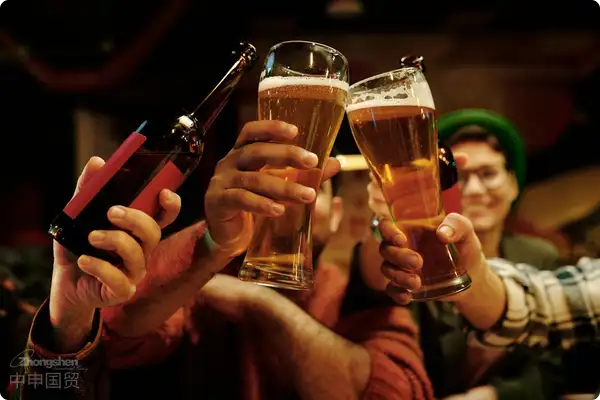
 Shanghai Public Network Security Record No. 31011502009912
Shanghai Public Network Security Record No. 31011502009912 